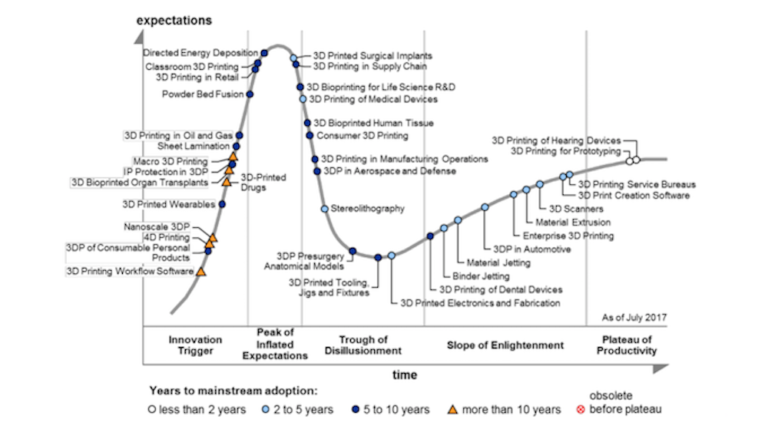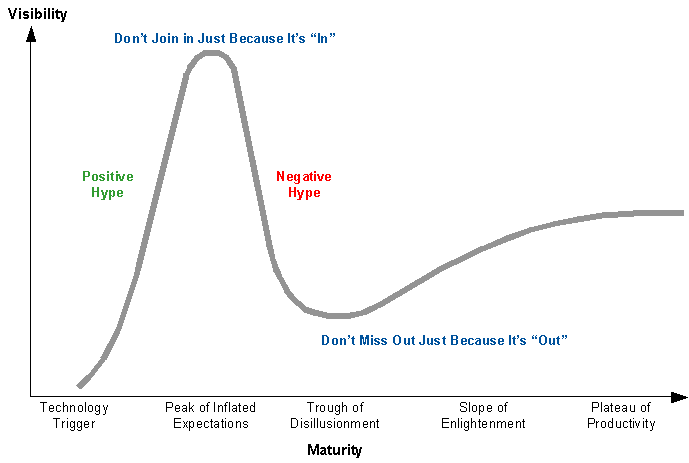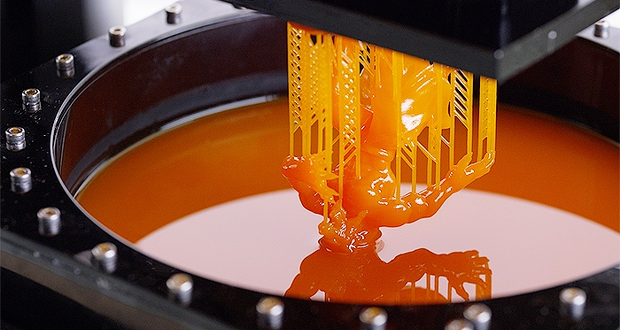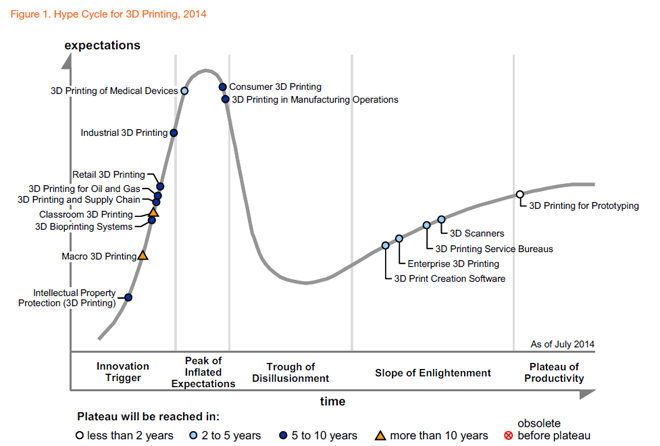The Gartner 2017 report on 3D Printing
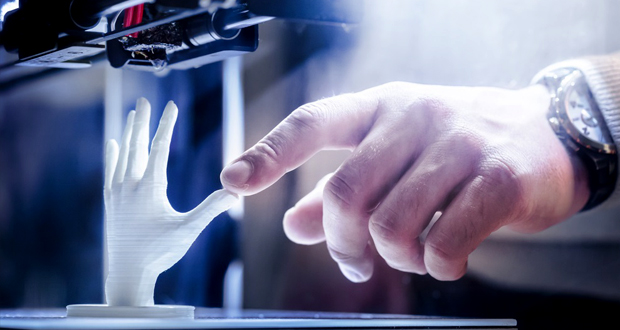
3D printing has been one of the most exciting new technologies for several years now, with its accessibility and popularity growing each day and with new technologies and processes being created constantly. However, do we really know what to expect from this technology?
Every year, since 2005, the Gartner Research Center in the United States has published an annual report of their expectations and trends for emerging technologies. Since then, they have published many reports dedicated to 3D printing, with their latest report lending a hand to much of the hype and excitement of different technological advances currently seen in this sector. In order to formulate their findings, they based their research on the maturity, ease of adaptability, and commercial application of 3D printing, in order to give us a glimpse into the future of 3D printing.
In the graph above, Gartner has divided the industries into 5 main stages: Innovation Trigger, Peak of Inflated Expectations, Trough of Disillusionment, Slope of Enlightenment, and the Plateau of Productivity. According to their report, the current trends that are on the rise are positioned under Innovation Trigger, Some highlights of this portion include 3D printed drugs, bioprinted organ transplants, 3D printed wearables, and 4D printing.
At the peak of the curve, you can find other applications such as 3D printing in the classroom, the selling of 3D printed products, and the introduction of 3D printing into supply chains.
On the negative hype portion of the graph, you will see areas of 3D printing that have been initiated but ended up not being successfully completed or were not able to meet current expectations. Although titled negative hype, this portion does not necessarily mean that these are negatives in the field and that they are ending but instead, means that these are areas that will need to be developed further before they can reach their true potential. Among this portion includes many areas of bioprinting, such as the printing of tissue, consumer 3D printing, and 3D printing in aerospace & defense.
In the area titled the ‘Trough of Disillusionment’, the applications that are noted are the ones that are in their 3rd or even their 4th generation of products. These are often the projects that have had the most time to mature or those that will mature quickly. For example, the various additive manufacturing technologies, such as 3D scanning technologies and multi jet fusion to name a few. Stereolithography is not yet in this portion, although Gartner believes that development of this technology will grow quickly. Other applications such as modeling software are believed to be crucial to the market, with Gartner expecting them to mature in 2 to 5 years. Prototyping in 3D printing is already highly integrated into companies and is expected to be an indispensable aid within 2 years.
When comparing this graph with the one published by Gartner in 2014, you can easily note that all of the applications identified reflect strongly in additive manufacturing today. We can also see that the predictions proposed three years ago are still close to the ones given today. Because of this, their report gives a rather reliable representation of the future evolution of 3D printing, although there is always room to question.
Find more information on the report here
What do you think of the findings of this report? Let us know in a comment below or on our Facebook and Twitter pages! Don’t forget to sign up for our free weekly Newsletter, with all the latest news in 3D printing delivered straight to your inbox!






